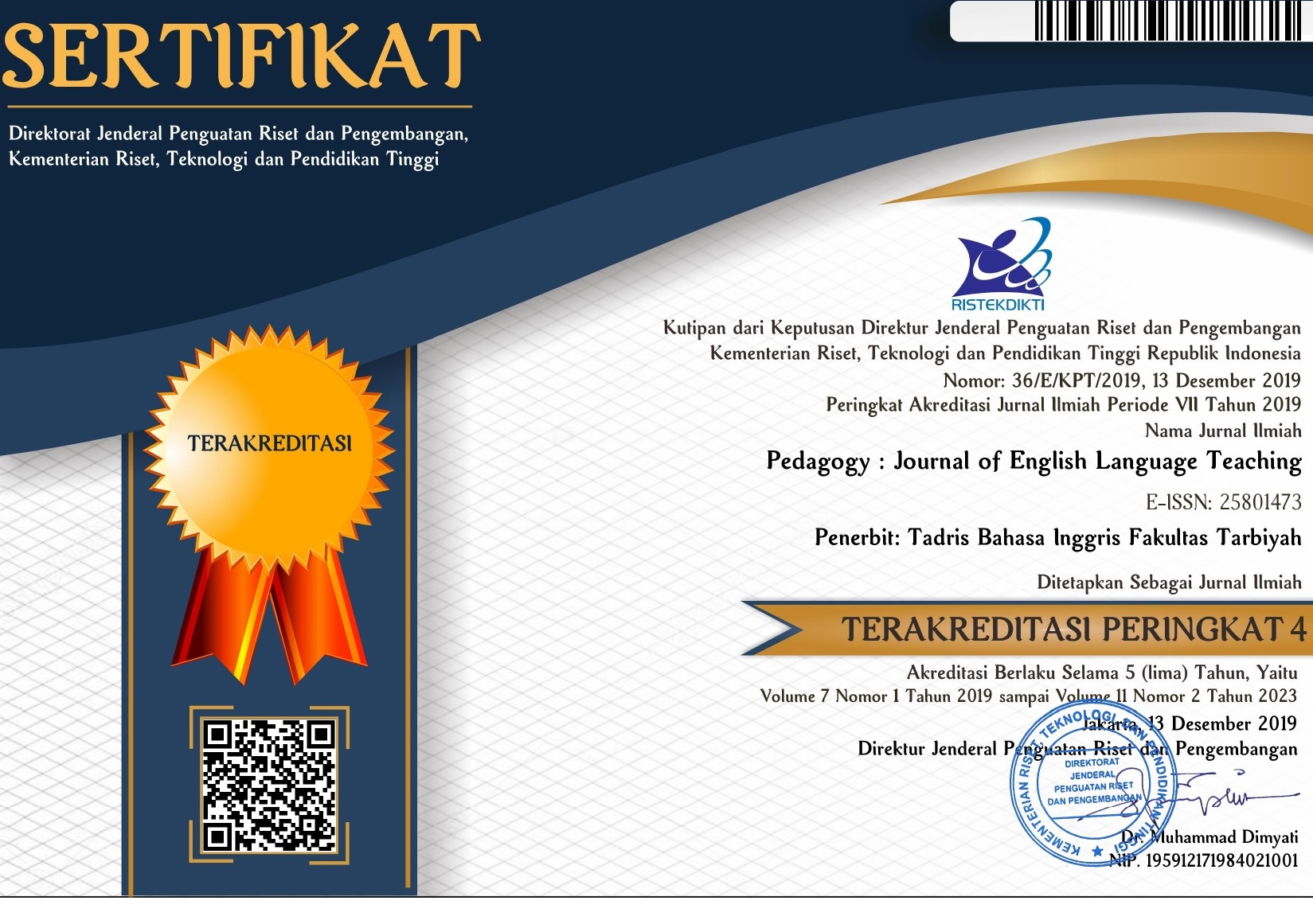ROLE-PLAY IN TEACHING ENGLISH LITERATURE
DOI:
https://doi.org/10.32332/pedagogy.v5i2.940Keywords:
teacher’s creativity, literature as appropriation, role-play rubric, Narratives of HodjaAbstract
The important thing in teaching and learning process is teaching method. However, the teacher’s creativity is more important than the method itself. This paper offers a method for EFL students to study English through literature. Role-play as a teaching method to increase students’ linguistic competence through narrative as one of literary works. This paper also offers evaluation system to measure the students’ competence in learning literature study through narratives of Hodja.
References
Downloads
Published
2025-11-12
Issue
Section
Articles
License
Copyright (c) 2025 Nisa Syuhada

This work is licensed under a Creative Commons Attribution-ShareAlike 4.0 International License.















